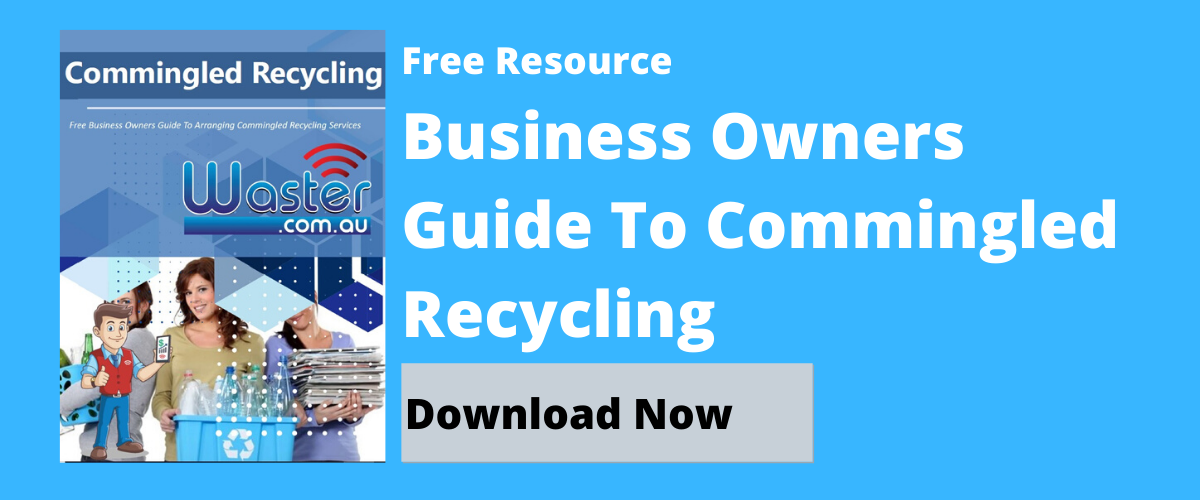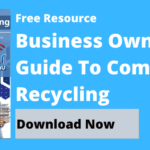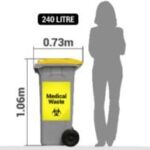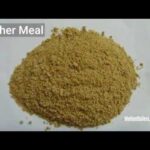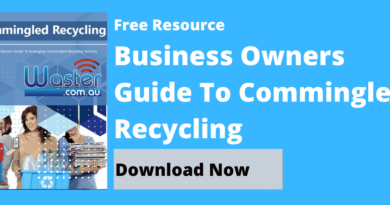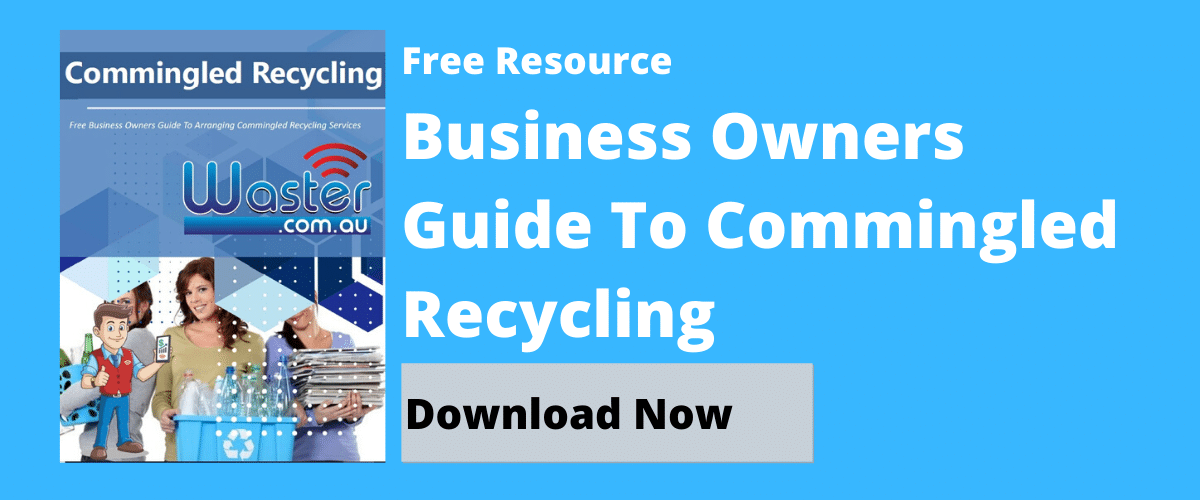Contaminated Waste Disposal ☢️ – And Why Recycling Contamination Matters
Energy Disrupter
Contaminated Waste Disposal ☢️: If fines of up to 500 dollars won’t make you rethink the next time you unwittingly throw something away, nothing will! This goes to show that the cost impact of contaminated waste is literally at your own disposal – if not, may currently be hidden from your view.
We all know what happens to trash eventually. Waste destinations include landfills, waste-to-energy plants, recyclables and composting. Understanding the life cycle of waste is of utmost importance as it correlates directly to proper waste disposal and management.
>Download Now: Free PDF Business Owners Guide To Commingled Recycling Bin Services
A bit about Waster
Before we continue our topic on what happens when recycling is contaminated, let me share more information about Waster.
We here at Waster provide you with innovative solutions for your and your business’s waste management and recycling needs. Additionally, we provide flexible, 30-day contracts instead of the typical lock-in contracts, which proves to be better.
Click on the blue button to learn more.
READ: How To Make Diesel Fuel From Plastic Waste ⛽
Contaminated waste disposal: And its impact on waste management
Recycling contamination occurs when materials are sorted into the wrong recycling bin.
Contaminated waste disposal: a short definition
You must know beforehand what the term “recycling contamination” means.
Basically, the recycling and waste management industry use the term recycling contamination when they refer to anything inappropriate found in the recycling bin. Simply put, these are items that should not be thrown and found in the recycling bin.
We can consider many items as contaminants when recycling. Generally, recycling contamination happens when non-recyclable items make their way to a recycling bin, mixed with the recyclables.
More details
The average recycling contamination rate is 25 per cent or 1 in 4 items! This means that every 1 in every 4 items set for waste disposal is contaminated. It also occurs when containers are not properly cleaned or emptied – such as residual food inside takeaway boxes.
When waste is in the wrong recycling container, even recyclable materials, such as plastic and other paper products, can act as contaminants. The only time it is okay to “co-mingle” or mix recyclables together is when you have an agreement to do so with your recycling service provider.
It’s worth noting that recyclables that contain residues such as food waste, oil, and grease can contaminate other recyclables.
(Important note: recycling companies have varying tolerance on what’s acceptable for collection. It is best to check with your chosen recycling provider)
Here’s a tip to remember: anything other than the specific material you’re collecting or disposing of can be a contaminant. When your waste is contaminated it is less likely to be separated properly and find its way to proper recycling.
The bottom line is: unsorted and contaminated waste disposals are an unquestionable liability.
Residual waste is the most common culprit of waste disposal. Mixing just a bag or two of food waste into recyclables renders an entire bin load as nothing but absolute rubbish.
[embedded content]
This can greatly hamper any step that is within the life cycle of waste – potentially causing more havoc. Luckily, turning your home waste flows from essentially a polluting problem into a best-practice recycling system is actually relatively easy.
Comprehending how contamination affects your waste costs is the key to discovering a better approach to waste management.
Monetary and environmental costs of recycling contamination
Contaminated waste disposal requires our undivided attention. This is why contamination is such an important issue to tackle.
Contamination (specifically contaminated waste disposal) is the single biggest and growing problem we all are likely to face with waste disposal. For one, failure to properly separate different kinds of waste means that we have to pay more to get rid of it. Secondly, we are more likely to lose track of exactly what waste we are producing. Lastly and most importantly, we continue to pollute the environment instead of being part of the solution.
The inception of contamination is when the wrong items go in the wrong bin.
Contamination makes the bin collection service more expensive and compromises the sorting of materials. Moreover, improper items can expose recycling workers to hazardous waste, vector-borne diseases and other physically damaging items.
When the occurrence of contaminants becomes too great, landfills become their destination. That is – even when including items that are viable for recycling. This happens because recycling after all is a business.
Recycling becomes more expensive as money and time are required to separate contaminants. Radical plans have been put forward to fine Australians 200 dollars for putting the wrong rubbish in their bins.
The proposals would see a three-strikes policy threaten Adelaide residents and businesses, with fines of up to 187.50 dollars for using the wrong recycling or green waste bin.
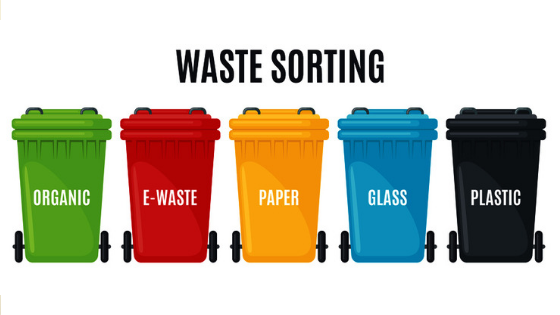

The controversial new scheme would involve new council by-laws, cameras on bin trucks and ‘education letters’ for first-time offenders.
Meanwhile, in Bunbury, residents could be facing big fines if they put the wrong waste in their rubbish bins. Penalties range between 50 dollars and 500 dollars, depending on the offence. Putting the wrong waste in a general, recycling or organic bin could attract a 350-dollar fine.
How to deal with contaminated waste disposal
Contaminants turn your recycling into nothing more than trash. There are many types of recycling contamination, including plastic, food waste, and more. Nevertheless, some contaminants are worse than others and most are easily avoidable.
Contaminated waste is a problem, but straightforward to solve, when you strengthen management control of waste processes. The best part of improving your waste management is that it does not cost you extra.
In fact, you save costs via income from clear streams of recyclables.
The best way to solve most problems is through communication, and that should include your recycling provider.
Research or reach out to your provider to establish the best way to prepare your recycling according to your provider’s needs. Many communities have “single-stream recycling”. That means sorting on their end is unnecessary.
For the rest of us, it requires a little extra effort.
To cut down the occurrence of contaminants and lessen contaminated waste disposals, try labeling each recycling container. Pictures are always helpful if you want to take the extra step.
Remember that there are hardworking people sorting the items you are recycling – without them, these items would just be trash.
Before you recycle that plastic to-go container with food remnants, think of the person that will have to handle it. Give containers a quick scrape to ensure the removal of any excess food. Doing these things will make the recycling process more efficient.
And, you will increase the value of what you send to your local facilities. With your newfound knowledge of contaminants, you can help save the planet.
The next time you make that trip to the recycle bin, ask yourself: have you helped prevent contaminants?
Contact Waster today for your waste and recycling needs!
Are you a business in need of waste and recycling bin services?
If so, please call 1300 WASTER (1300 927 837). You can also email us at [email protected] if you have any further questions. Find the best deals in terms of waste and recycling pricing and services!
